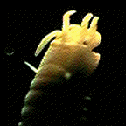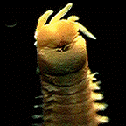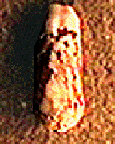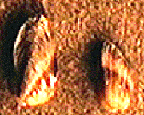| |
Lab Activity 9.2
Biota 7: Organisms Found
Inside of Beachrock
|
|
|
|
Directions
|
|

|
Study
the instructional material below. Be sure to click on each of the photographs
for an enlarged view in a separate window. The
larger version is necessary to complete the assignment.
It opens in a separate window which can be resized by grabbing the bottom
right corner and dragging it. It
can also be moved by
grabbing the top heading bar and dragging it.
Be sure to close the extra window by using the X in IBM, or the close box
in MAC when you are finished using them. |
|
|
Introduction
|
|

|
In
this lab activity you will study the organisms inside beachrock. |
|
 Instruction
Instruction
|
|

|
Use
the information below to fill out the checklist of the biota of beachrock
microhabitats.
Be sure
to write about what you are learning in the lab section of your notebook.
You will be expected to answer questions about the lab activity during
the lab self test and lab quiz. It helps to have your text and coloring
books open beside you for support.
|
| |
| Supporting
Information |
| Refer
to the Assigned Readings Below: |
| Marine
Biology Textbook |
none |
| Marine
Biology Coloring Book |
none} |
|
| |
This
picture gallery summarizes the biota found inside of beachrock at Playa
Estacion, Puerto Penasco, Sonora, Mexico. It should be used to complete
lab activity 11.2.
|
Eunice
afra
|
|

|
 |
"Rock
boring worm"
| Phylum |
Annelida |
| Class |
Polychaeta |
| Order |
Errantia |
| Family |
Eunicidae |
|
|
| Morphology |
Long,
cylindrical body divided into linear segments. Head with two
cushionlike palps and five antennae. The second segment has
two short tentacles. |
| Feeding |
Has chitinous
jaws for feeding on large particles. |
| Defense |
Lives in borings
and crevices where its protected. |
| Reproduction |
Seperate sexes
and synchronous spawning |
| Habitat |
A variety of
rocky habitats including borings in limestone |
| Distribution |
Circumtropical
and throughout the Gulf of California |
| Other |
A major bioeroder
of beachrock |
|
|
Phascolosoma
perlucens
|
 |
"Peanut
worm"
| Phylum |
Sipuncula |
| Class |
|
| Order |
|
| Family |
Phascolosomatidae |
|
| Morphology |
A
medium sized, slender worm with a sac-like bodt and a long trunk.
Patches of dark brown, sharp tubercles are located on the trunk
and posterior end. There are ten to fifteen tentacles on the
head that are not visible when the trunk is retracted (inverted). |
| Feeding |
Feeds on detritus
using its trunk and tentacles to mop up the area near the mouth
of its burrow. |
| Defense |
Lives in borings
and crevices where its protected. |
| Reproduction |
Seperate sexes
and synchronous spawning |
| Habitat |
A variety of
rocky habitats including borings in limestone |
| Distribution |
Ino-Pacific
to the Gulf of California |
| Other |
Bores into and
bioerodes beahrock |
|
|
Lithophaga
aristata
|
 |
"Boring
mussel"
| Phylum |
Mollusca |
| Class |
Pelecypoda |
| Order |
Mytiloidea |
| Family |
Mytilidae |
|
| Morphology |
Characteristic
shape of an hourglass or a figure 8. The mussel uses an acid-mucus
secretion to soften the surface and then srapes the rock particles
away by rotating its shell. The shell of the mussel is protected
from its own acidic mucus by a special covering (periostracum). |
| Feeding |
Filter feeder |
| Defense |
Lives in borings
where its protected. The surface opening is small where the
mussel first enters and it becomes trapped and must live its
entire life inside. |
| Reproduction |
Separate sexes
and spawning |
| Habitat |
Intertidal |
| Distribution |
Throughout the
world in sub-tropical and tropical waters. |
| Other |
This species
commonly bores into rocks and shells of other molluscs. |
|
|
Lithophaga
spatiosa
|
 |
"Date
mussel"
| Phylum |
Mollusca |
| Class |
Pelecypoda |
| Order |
Mytiloidea |
| Family |
Mytilidae |
|
| Morphology |
Large
wide shell covered with many rows of fine nodules. |
| Feeding |
Filter feeder |
| Defense |
Lives in borings
where its protected. |
| Reproduction |
Separate sexes
and spawning |
| Habitat |
Intertidally
in shallow water. |
| Distribution |
Northern Gulf
of California to Ecuador. |
| Other |
This species
is commonly found boring into oyster shells. |
|
|
|
|
|
|
|
|
|
|




